|
|
|
|
List in a table
List by decades
List by issues
|
|
|
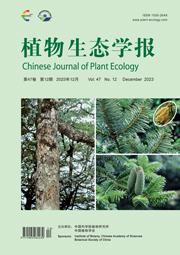
2023,47 (12)
|

2023,47 (11)
|
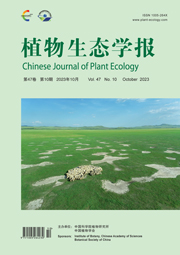
2023,47 (10)
|
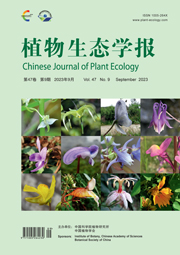
2023,47 (9)
|
|
|
|
|
|
|
|

2023,47 (12)
The critically endangered plant Abies beshanzuensis, with its trunk and bark, branchlet,
leaves (Photos from the Dendrological
Atlas project archives, Zs. DEBRECZY - I. RACZ), pollen cones and cones (Photographed
by CHEN Xiao-Rong). Currently, there are only three mature A. beshanzuensis living in the wild. It is a nationally protected
first-class plant species and is listed among the 12 most endangered plant
species globally. Abies beshanzuensis holds significant scientific importance in
phytogeography and ecology research. Yang et
al. investigated all the populations of A.
beshanzuensis and A. ziyuanensis, and conducted phylogenomic population analyses. They resolved the longstanding
issue of species delimitation and revealed the close genetic relationship
between the Dayuan population and A.
beshanzuensis (Pages 1629-1645 of this issue).
|

2023,47 (11)
Autumn seasonal landscape of broadleaf and Pinus koraiensis mixed forest in Changbai Mountain, Jilin Province (Photographed by ZHAO Xiu-Hai). Based on a unique dataset covering 209 forest plots distributed in the natural forests of the Da Hinggan Mountains and Changbai Mountain regions in northeastern China, this study conducted a comparative analysis on how tree species diversity and tree functional traits contribute to the maintenance of multifunctionality in forest ecosystems through niche complementarity and selection effects. This research offers insights into the maintenance of forest ecosystem multifunctionality under climate change (Pages 1507-1522 of this issue).
|

2023,47 (10)
Aerial
view of the degraded
grassland in Ulgai, Xilin Gol,
Nei Mongol, China (Photographed by MA Quan-Hui). Wang et al. aiming at
the state transition of degraded grasslands and the environmental variation,
emphasized the gradual restoration, artificial assisted intervention, grazing
interference and other restoration methods from the perspective of system
ecology, so as to achieve long-term and stable grassland
multifunctionality (Pages 1464-1470 of this issue).
|

2023,47 (9)
Photos of nectar spurs show the diversity of nectar spurs in angiosperm (Photographed by JIN Xiao-Fang). From left to right in the first row: Platanthera chlorantha (Orchidaceae), Epimedium franchetii (Berberidaceae), Aconitum piepunense (Ranunculaceae), Aquilegia yabeana (Ranunculaceae). In the second row: Viola prionantha (Violaceae), Corydalis benecincta (Papaveraceae), Halenia elliptica var. grandiflora (Gentianaceae), Linaria maroccana (Plantaginaceae). In the third row: Utricularia aurea (Lentibulariaceae), Impatiens sp. (Balsaminaceae), Tricyrtis macropoda (Liliaceae), Tropaeolum majus (Tropaeolaceae). Based on the domestic and foreign related databases and articles, Yang and Jin summarized the morphological diversity and adaptive significance, analyzed the differences in spur lengths among nectar spur plants from different families, introduced the main pollinators and nectar robber species, discussed the evolutionary mechanisms governing nectar spur length, and identified the scientific questions that need to be addressed in the future (Pages 1193-1210 in this issue).
|
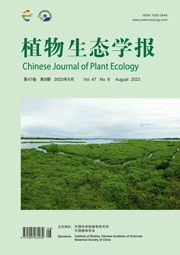
2023,47 (8)
A typical mangrove forest dominated by Avicennia marina with an intact community structure in Chikan Island, Zhanjiang, Guangdong, China (Photographed by ZHENG Yi). The mangrove forest is a special wetland ecosystem found in coastal regions of tropical and subtropical areas all around the world. The distribution range of the world’s mangrove forests can be divided into two main regions: the Indo-West Pacific and the Atlantic-East Pacific. The area around the South China Sea (SCS) is situated at the center of the Indo-West Pacific region. Yang and Ren reviewed the species distribution patterns and dispersal histories of mangrove trees in the SCS. They explored species diversity, long-distance dispersal routes, and the underlying factors for eight regions in the SCS. Their study provides a new per-spective for understanding historical relationships between the floras of Southeast Asia and South China, as well as predicting the effects of climate change on the distribution range of mangrove species (Pages 1105-1115 of this issue).
|
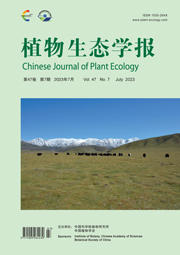
2023,47 (7)
The landscape during the growing season of Haibei alpine meadow under the co-grazing system
of wild herbivores and livestock (Photographed by ZHANG Fa-Wei). The vegetation is primarily composed
of plants from Poaceae, Cyperaceae, Leguminosae, Compositae, Gentianaceae, and Ranunculaceae families. The
dominant species include Kobresia humilis, Elymus nutans, Stipa aliena, Gentiana straminea and Oxytropis
ochrocephala. The main livestock are Ovis aries and Bos mutus. Wild herbivores mainly consist of Plateau pika,
Tundra vole and Eospalax fontanierii. Li et al. studied the chemical stoichiometric characteristics of topsoil and
leaves of dominant plants in response to changes in precipitation and nitrogen addition. The findings revealed that
the stoichiometric variations in soil and vegetation were predominantly influenced by temporal or species-specific
factors, rather than the experimental treatments, highlighting the complexity of alpine meadow ecosystems in response
to alterations in precipitation patterns and nitrogen levels (Pages 922-931 of this issue).
|
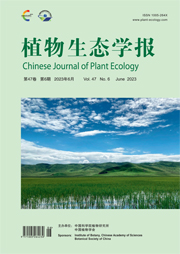
2023,47 (6)
Wetland landscape of Zoigê County Zoigê Marsh National Nature Reserve
(Photographed by HU Zhao-Yi). Zoigê Marsh is located at the northeast edge of
the Qingzang Plateau and is characterized by a single marsh vegetation
dominated by Carex
muliensis. It is the
largest plateau peat swamp in China. Hu et al. studied leaf
nutrient resorption of C.
muliensis under different water
levels (Pages 847-855 of this issue).
|

2023,47 (5)
The
landscape of subalpine forest in Bipenggou National Nature Reserve, Li Country,
Sichuan Province (Photographed by WANG Zhuang). The subalpine forest is located
in the transition zone between the eastern edge of the Qingzang Plateau and
Sichuan Basin, with Minjiang fir (Abies fargesii var. faxoniana) and other hardy coniferous
trees as the dominant species. Seasonal snowfall always happens in winter, with
snow coverage and soil freeze-thaw cycling lasting for 5-6 months every year.
Du et al. investigated the dynamics of total
phenols and condensed tannins in six leaf litters across three decomposing years
under different positions within forest gap in a subalpine forest of Western
Sichuan (Pages 660-671 of this issue).
|
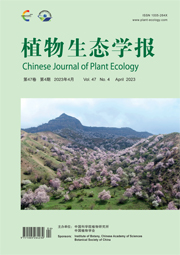
2023,47 (4)
Prunus
armeniaca sparse
forest landscape in Tianshan, Ili, Xinjiang, China (Photographed by LIU
Li-Qiang). Prunus armeniaca often occurs in patches, belts, or
sparse formations, commonly accompanied by other tree species such as Malus sieversii,Crataegus
cuneate, as well as shrubs like Spiraea tianschanica, Berberis
atrocarpa, Caragana turkestanica. The herbaceous layer has an
average coverage of about 35%, with common species including Cynodon dactylon, Cannabis
sativa, Impatiens brachycentra and Setaria viridis. Shi et
al. investigated the growth characteristics and spatial distribution
patterns of naturally regenerated young seedlings of P. armeniaca population,
providing a scientific basis for the conservation of this species (Pages 515-529 of this
issue).
|

2023,47 (3)
The landscape of artificial Caragana forest in Wuqi, Shaanxi (Photographed by HE
Jie). He et al. have conducted a 20-year-long study, analyzing the
spatiotemporal patterns and underlying drivers of vegetation coverage on the
Loess Plateau since the implementation of the policy of returning farmland to
forest and grassland (Pages 306-318 of
this issue).
|
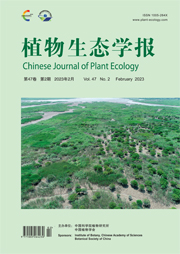
2023,47 (2)
Spartina alterniflora invading the mangrove forest in Zhangjiang Estuary, Fujian, China (Photographed by HUANG Hao). In Zhangjiang Estuary, Wang et al. studied the variation patterns and main driving factors of leaf traits of S. alterniflora along a tidal gradient, providing a new perspective to understand and predict the ecological adaptation of S. alterniflora to sea-level rise in coastal wetlands (Pages 216-226 of this issue).
|
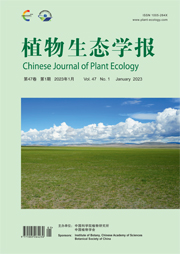
2023,47 (1)
The landscape of alpine steppe in Baingoin County, Xizang Autonomous Region, China (Photographed by WANG Guan-Qin). Yang et al. summarized nonlinear responses and potential mechanisms of community diversity, carbon and nitrogen cycles of grassland ecosystems to external nitrogen input, which could be expect to provide theoretical basis for evaluating ecological impacts of anthropic nitrogen input (Pages 1-24 of this issue).
|

2022,46 (12)
Peak growing
season landscape of the alpine Potentilla
fruticosa scrubland long-term flux observation site,
Haibei, Qinghai Province (Photographed by ZHANG Fa-Wei). Haibei flux observation site (37°40′ N, 101°20′ E,
3400 m), setup in 2002, is one of
the longest observation sites in the alpine ecological vulnerable area. Supported
by the National Key R&D Program of China, “Flux observation network of
ecological vulnerable areas in Northern China” was established in 2017. This
network, comprised by 20 flux observation sites, covered the arid ecological
vulnerable area (Neil Mongol Plateau) and the alpine ecological vulnerable
area (Qingzang Plateau). The dominant vegetation is grassland, ranged from almost
all the types of temperate and alpine grasslands. Eddy covariance technique is
adopted to measure the carbon and water fluxes across all sites, and totally 150
site-year flux dataset has been collected. Therefore, a special issue “Ecosystem
carbon and water fluxes in ecological vulnerable areas of China” was organized
to present our research progresses, including flux data processing method,
energy flux balance, coupling of carbon and water fluxes, etc. We hope this
issue can promote the relevant studies on flux observations of the ecological
vulnerable areas in China (Pages 1433-1522 of this issue).
|
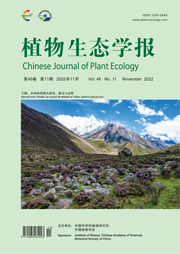
2022,46 (11)
Alpine Rhododendron shrubland in Hengduan Mountains, southwest China
(Photographed by DENG Qiang).
Shrubland is an important component of the terrestrial ecosystem and plays an
essential role in maintaining biodiversity and stabilizing ecosystem functions.
Recent developments in vegetation investigation, control experiments, and
community theory provide
new opportunities for the study of shrubland diversity patterns, which is
helpful to deepen the understanding of the ecological processes that underpin
the shrubland diversity pattern. This
special issue contains reviews and research articles on
community structure, plant functional traits, interspecific relationship and
ecological adaptation, and soil stoichiometry of typical shrubland in China.
Through
this special issue, we hope to
promote the study of the ecological pattern and process of shrubland in
China.
|
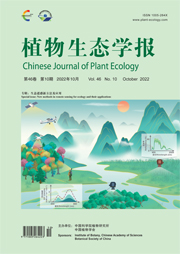
2022,46 (10)
Schematic
diagram of space-air-ground integrated remote sensing for ecosystem monitoring.
Integrated ecosystem monitoring is the foundation for understanding ecosystem
processes and predicting ecosystem changes. Recent developments in remote
sensing techniques provide new opportunities for multi-scale nature ecosystem
monitoring with high frequency and accuracy, which largely reinforce our
capability in collecting space-time continuous ecosystem observations. This
special issue contains reviews and research articles on new remote sensing
methods (e.g., multispectral and hyperspectral remote sensing, solar-induced
fluorescence, light detection and ranging) and their applications in nature
reserve monitoring. Through this special issue, we hope to attract attentions
from the ecological community and promote applications of new remote sensing
methods in ecological studies.
|
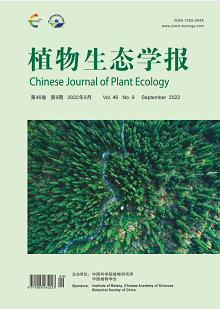
2022,46 (9)
Aerial view of the subalpine dark coniferous forest in Wanglang forest dynamics plot, Sichuan, China (Photographed by DONG Lei). Based on the first census data of the 25.2 hm2 Wanglang forest dynamics plot, Fanet al. examined the species composition and community structure of woody plants in the plot,which provides basic information for future studies on the diversity maintenance and regeneration mechanisms of the subalpine dark coniferous forests in western Sichuan (Pages 1005-1017 of this issue).
|
|
|
|
|
|
|
|
|
|